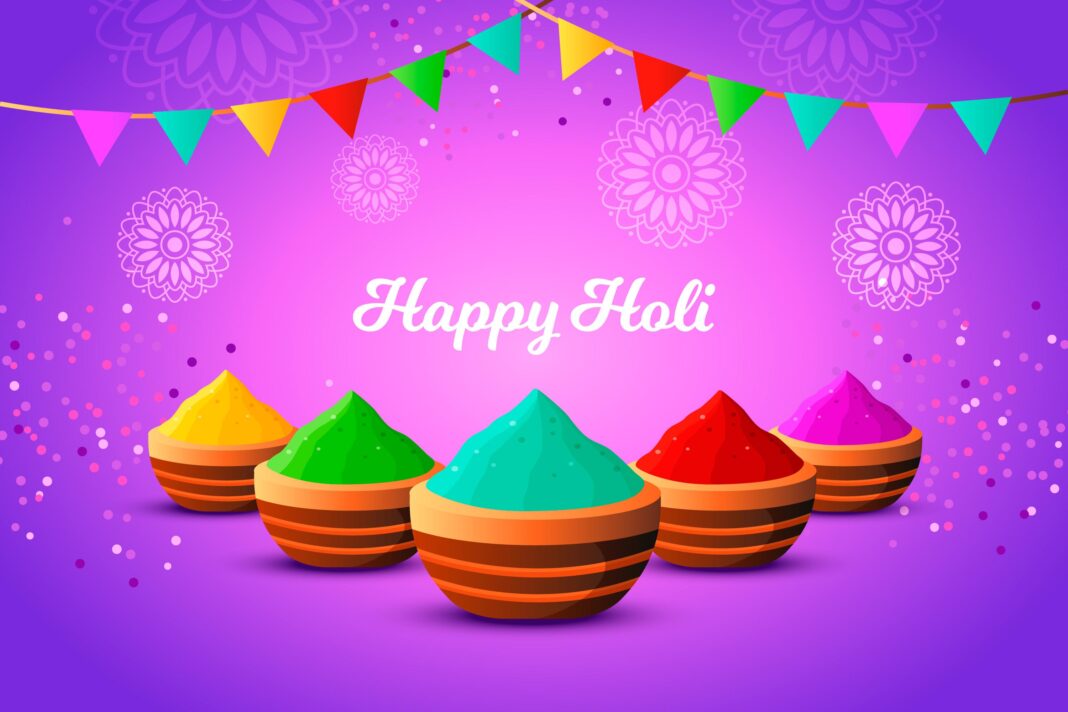Title: Holi Festival: A Celebration of Colors and Unity
Holi, also known as the Festival of Colors, is a vibrant and joyous Hindu festival celebrated in India and various parts of the world. It marks the arrival of spring and the triumph of good over evil. Holi is a time when people come together, forget their differences, and immerse themselves in a riot of colors. In this essay, we will explore the significance, traditions, and spirit of unity that encapsulate the essence of the Holi festival.
Significance of Holi: Holi holds great cultural and religious significance in Hindu mythology. The festival is rooted in legends, the most popular one being the story of Prahlada and his evil aunt Holika. It symbolizes the victory of virtue, the burning of negativity, and the renewal of life. Holi is also associated with the divine love between Lord Krishna and Radha, making it a festival that celebrates love and friendship.
Traditions and Celebrations: Holi is a two-day festival that brings people together in a joyous atmosphere. The festivities begin on the evening of the full moon, known as Holika Dahan. Bonfires are lit to commemorate the burning of Holika and the triumph of good over evil. The following day is known as Rangwali Holi, the day of colors. People gather in open spaces, streets, and parks, armed with colorful powders and water-filled balloons, ready to immerse in the spirit of Holi.
The Spirit of Unity and Joy: Holi is a festival that transcends boundaries and unites people from different walks of life. On this day, social hierarchies, age gaps, and social norms are forgotten as everyone actively participates in the revelry. The colors become a great equalizer, erasing differences and fostering a sense of unity and harmony. People of all ages, genders, and backgrounds come together to splash colors, dance to traditional music, and exchange greetings of “Happy Holi.” It is a time of joy, laughter, and uninhibited celebration.
Symbolism of Colors: Colors hold immense symbolism in Holi. The vibrant powders represent the diverse hues of life and the beauty of nature. They also symbolize the myriad emotions and experiences that shape our lives. Holi encourages people to let go of inhibitions, embrace diversity, and celebrate the richness of human existence. The colors reflect the essence of life itself, reminding us that our differences make us beautiful and that unity is achieved through acceptance and understanding.
Community and Forgiveness: Holi also emphasizes the importance of community and forgiveness. It is a time to mend broken relationships, bury past grievances, and start afresh. People visit friends, family, and neighbors, exchanging sweets and warm wishes. Holi serves as a reminder to let go of grudges, forgive, and foster goodwill. It promotes the idea of a harmonious society built on love, compassion, and understanding.
Holi, the Festival of Colors, is a celebration that captures the spirit of unity, joy, and renewal. It is a time when people come together to rejoice, forget differences, and spread happiness. Holi teaches us the importance of embracing diversity, fostering forgiveness, and celebrating the vibrancy of life. As the colors fill the air, hearts are filled with love and a sense of togetherness. Holi is not just a festival; it is a celebration of humanity and the power of unity.












